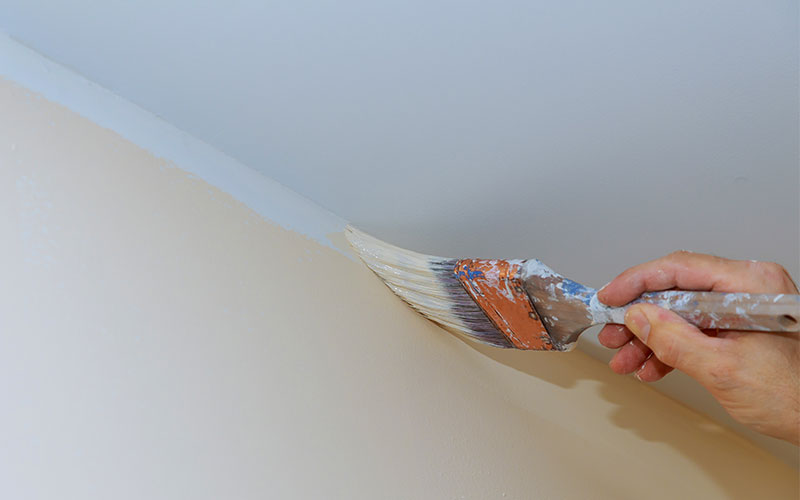
What is cutting in?
“Cutting in” is the technique that is used when painting the tight areas of a room: edges of walls, the ceiling line, corners, around window and door frames, skirting boards, architraves …. Basically anywhere that a paint roller can’t quite get into.
What kind of brush is best?
Our top tip for cutting in is to ensure that you invest in a good quality brush. A good quality paintbrush is equally as important as a quality paint, so make sure that you don’t shortcut on your brush. Sometimes the poorer quality of a cheap brush can affect the quality of your paint application. The actual selection of a brush comes down to personal preference, but we recommend either:
Maverick Interior Brush: the thickness of the interior brushes is ideal for internal projects as the bristles are less bulky.
Maverick Sash Cutter: sash cutter brushes were designed for the purpose of cutting in.
Despite the perception that a smaller brush will produce a better result, we recommend using a bigger brush when cutting in. Using a bigger brush will allow you to produce a straighter line, as the bristles will hold together better.
Our friendly and knowledgeable staff are always happy to chat about paint brushes, so head into your local Inspirations Paint store to chat about your project and work out which brush is best for you.
How to cut in:
-
Hold your paint brush like you would hold a pen
-
Dip the brush into the pain can 1/3 of the bristle length
-
Pat the brush on the inside of the can to make sure all the bristles are saturated with paint (don’t drag the paint brush on the edge of the paint can as this will remove the excess paint – we want to soak the paint into the paint brush to make sure the paint gets to the hidden bristles for a smooth application!)
-
Quickly apply the paint on the wall close to the edge you are wanting to paint, but not flush against it. You aren’t cutting in yet - we just want to get the paint on the surface. You don’t want to approach the join or corner with a fully loaded paintbrush as the result will not be as neat. Go back to the applied paint and slowly start spreading the paint into your edge. You want to glide the brush on its edge at a 45-degree angle in a slight arc motion, ensuring you are getting into the tight areas. The slower you spread the paint, the more concise the brush line will be. Make sure you cut in on every coat of paint that is applied.
Top Tips:
Always cut in first then continue painting with a roller. Cut in and paint with a roller one wall at a time. If you cut in all areas first and then roll the entire room, the paint that was applied when cutting in will have dried quicker and you will be left with a patchy, uneven finish. Don’t cut in too wide, only paint a strip approximately 50mm wide. You want to paint a strip that will allow you to get close enough to the adjacent side with your roller but isn’t too wide that your wall dries patchy and with visible lines. Make sure that you cut in on every coat of paint that you apply.
The best order to cut in is:
- Cornices and ceiling lines;
- Corners of the walls to about half way down;
- Middle of the wall down to the bottom of the wall;
- Skirting boards.
Do I need to use tape when cutting in?
Cutting in removes the need to use paint on your paint project only if you are re-painting all the surfaces in your room. For example, if you are giving your skirting board a fresh coat of paint as well, isn’t necessary to tape the skirting board as you will be painting over this as part of your project. However, if you are not planning on painting the trims of your window frame, we definitely recommend using some masking tape for a cleaner finish.
Chat to our Inspirations Paint experts!
Head into your local Inspirations Paint store to have a chat to our friendly staff who just love to talk all things paint, and ask all the question you have about cutting-in! Our teams are equipped with so much knowledge and experience – they may have a trick or two to share, a great product to recommend or offer valuable advice.